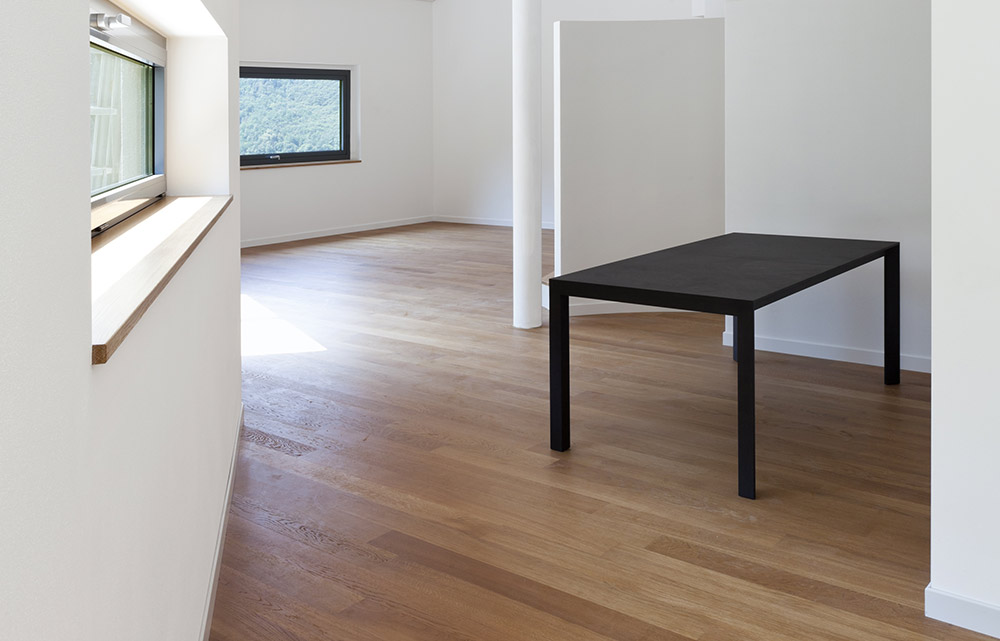
Custom Home Building Across Ontario: Key Trends and Players
You want a home that feels like yours the moment you walk through the doors.
Local rules, rising energy‑performance codes, and design inspiration from Toronto to Burlington now make that dream both exciting and complex. Working with custom professionals eases the strain, but only when you understand what sets them apart and how they guide each step. This guide clears the noise so you can move forward with confidence. Ontario’s market rewards families who prepare early, ask the right questions, and choose partners who value precision. From the first sketch to the final occupancy permit, each decision can protect comfort, budget, and resale value for decades. Using current data, on‑site insights, and our own build experience, we outline the people, processes, and trends shaping one‑of‑a‑kind homes across the province. You will finish equipped to brief any builder and start planning the space your family deserves.
What Sets Custom Home Builders In Ontario Apart From General Contractors
Custom home builders in Ontario focus on one‑off residences that reflect a client’s lifestyle, site, and long‑term goals; general contractors often manage predefined plans or repetitive builds that follow volume‑based schedules. A custom team refines every specification, from window glazing to millwork profiles, while coordinating structural engineering, site services, and municipal approvals in tandem. That unified scope allows seamless quality control, single‑source responsibility, and predictable budgeting across the build timeline. Clients gain tailored craftsmanship and a transparent path that links design intent to finished results without compromise.
General contractors can still produce solid work yet rarely allocate the same design hours or specialist trades needed for hallmark features such as whole‑house automation wiring, integrated millwork walls, or triple‑pane fenestration packages. Their budgets lean on lowest‑bid subcontracting, whereas a custom firm often maintains curated trade networks focused on detail and performance. For homeowners in Toronto, Oakville, or Burlington seeking architectural nuance or strict energy targets, that extra layer of planning makes the difference between an adequate house and a true forever home built for local climate and code. Choosing custom home builders Ontario families trust therefore centres on priorities beyond simple square‑foot cost comparisons.
How Custom Builders In Ontario Guide You From Concept To Completion
Custom builders in Ontario offer a start‑to‑finish method that brings clarity, craftsman discipline, and schedule certainty. The process begins with client discovery meetings that capture lifestyle goals, desired architectural character, and functional must‑haves such as aging‑in‑place suites or accessory dwelling units for family support. Next, the builder collaborates with architects, interior designers, and consultants to align design intent with structural, mechanical, and municipal requirements. Finally, a detailed pre‑construction phase confirms pricing, procurement, and permitting so ground can break on time and without hidden surprises.
On‑site execution then follows a tight rhythm of framing, mechanical rough‑ins, insulation, finishes, and final commissioning, with constant quality checks and client updates. Throughout, transparent cost tracking and schedule forecasts keep budgets steady and stress manageable. After handover, reputable builders provide warranty support and seasonal check‑ins to protect performance over time. With these steps, custom builders in Ontario turn sketches into keys while safeguarding every critical choice along the way.
Concept Programming And Feasibility Analysis
Custom projects start with thorough site reviews, zoning verifications, and setback assessments to verify what is achievable before design fees begin. A builder familiar with Toronto’s mature neighbourhoods can spot servicing constraints that affect foundation depth or storm‑water retention early. Clients avoid redesign costs, and structural engineers work from accurate parameters rather than assumptions. The result is a concept package that marries creative vision with practical buildability for the chosen lot.
Close coordination between builder, architect, and planner during this phase resolves height restrictions, daylight plane rules, and heritage overlays before they disrupt budgets. Materials and energy‑performance targets also receive high‑level cost benchmarking so surprises disappear. These early analyses form the baseline for lasting, cost‑efficient decisions that continue through the entire schedule.
Design Development And Cost Alignment
Once a concept gains approval, the design team advances floor plans, exterior modelling, and structural layouts while the builder runs real‑time cost checks. Value engineering is not a cost‑cutting race but a technique to allocate funds to visible or functional priorities that matter most to your family. Cabinet shop drawings, window schedules, and HVAC load calculations all funnel into the builder’s estimating software for clarity. Clients receive progress snapshots and line‑item feedback that refine both aesthetics and spending.
This iterative loop preserves creative spark but keeps allowances within reach. Seamless sharing of digital models shortens review cycles, so municipal submissions reach planning desks sooner. For Oakville and Burlington builds, expedited approvals prevent idle months where budgets drift due to inflation or material indexing. Design and cost remain aligned instead of fighting each other.
Permit Submission And Municipality Coordination
Ontario’s permit process varies from Toronto’s Committee of Adjustment hearings to Halton Region septic reviews for rural lots. A custom builder’s project manager gathers engineering stamps, energy models, and conservation authority letters into a single package that meets first‑submission standards. Their familiarity with local clerks accelerates file acceptance and clarifies any revision notes promptly. Homeowners gain a reliable timeline for shovels in the ground, rather than guessing at civic response times.
During permit review, the builder prepares trade schedules and secures long‑lead materials such as European windows or engineered timber beams. Parallel planning means ground can break within days of approval, not weeks, so seasonal conditions line up with excavation or slab pour dates. That smooth alignment safeguards both project cash flow and site logistics.
Construction Phase And Quality Assurance
Framing begins once staking verifies boundary offsets and footing elevations. Custom builders in Ontario host mandatory trade kick‑offs to share structural drawings, mechanical routes, and finish standards so every crew starts in sync. On‑site supervisors run daily photo logs and three‑point inspections that confirm code compliance plus design intent. Clients receive portal updates with weather delays, progress photos, and upcoming decisions like stain samples.
Quality control extends beyond drywall to include infrared scans after insulation and blower‑door tests before occupancy. A documented approach finds gaps early rather than patching later. The same mindset governs millwork installs, tile layouts, and paint touch‑ups so handover lists stay short and final finishes meet the architect’s elevations.
Post‑Handover Support And Warranty Care
The relationship does not end once keys change hands. Most custom builders schedule ninety‑day, one‑year, and two‑year walkthroughs under Ontario Tarion regulations, but leading firms add seasonal maintenance guides specific to the home’s building envelope. Guidance on furnace filter swaps, sump pump checks, and humidifier settings keeps systems efficient and interiors healthy. A dedicated after‑care coordinator logs service tickets and dispatches trades within defined timeframes.
This long‑term attention protects resale value and ensures mechanical systems stay tuned to local climate demands. Families can focus on living rather than troubleshooting. In turn, the builder gains project legacy data that informs future designs, creating a continuous improvement cycle for quality and efficiency.
Four precise subsections—feasibility, design, permitting, construction, and warranty—work in unison to deliver a home that stands up to Ontario’s seasons and supports everyday comfort. Clients see transparent metrics at each milestone, so trust grows as the build advances. When a project wraps, owners hold both the keys and the knowledge to maintain performance year after year.
Key Home Building Trends Ontario Homeowners Are Asking About In 2025
Energy targets, wellness features, and flexible layouts shape decisions for new builds this year. Families plan for future life stages while meeting current work‑from‑home needs, so floor plans must adapt without costly renovations. Provincial code updates raise insulation values and air‑tightness standards, pushing builders toward better envelopes and mechanical systems. Local supply chains now offer specialised products that were once imports, further opening design possibilities while supporting regional manufacturing.
- Net‑Zero‑Ready Envelopes: Canada’s Greener Homes Grant fuels demand for triple‑pane windows, double‑studded walls, and continuous exterior insulation that achieve low energy loads.
- Mass Timber Structures: Ontario Building Code revisions permit taller wood buildings, and custom clients admire the warmth and carbon‑storage benefits of cross‑laminated timber.
- Heat Pump Adoption: New cold‑climate heat pumps satisfy both heating and cooling, trim operating costs, and reduce greenhouse‑gas emissions without sacrificing comfort.
- Aging‑In‑Place Primary Suites: Main‑floor bedrooms with curbless showers allow residents to stay in beloved neighbourhoods such as Oakville and Burlington long term.
- Outdoor Living Extensions: Three‑season rooms, covered decks with infrared heaters, and integrated grills turn backyards into functional living zones for family gatherings.
- Prefab Panelisation: Off‑site wall and roof panels accelerate framing, reduce waste, and improve build accuracy during unpredictable weather windows.
- Touchless Fixture Integration: Sensor‑activated faucets and voice‑controlled lighting improve hygiene and convenience without resorting to gimmicks.
Ontario homeowners weigh each trend against budget, climate resilience, and resale value. Local building inspectors now recognise many of these systems, making approvals smoother than in past years. Suppliers keep innovating, so performance upgrades cost less than a decade ago. Choosing trends that match lifestyle goals, not fads, remains the surest way to protect both comfort and investment.
What To Consider Before Hiring A Custom Builder In Ontario
Selecting a custom builder is part technical vetting, part relationship match. Start with licence verification through Tarion and proof of general liability insurance that covers both property damage and workplace safety. Request detailed portfolios with client references from recent projects in Toronto, Oakville, and Burlington to confirm quality consistency across styles and budgets. Transparent communication habits during early meetings indicate how conflicts will be handled later, so pay attention to schedule updates, cost explanations, and responsiveness to design revisions.
Contract structure matters just as much as craftsmanship. A clear cost‑plus agreement, fixed‑price contract, or hybrid model should outline allowances, holdback timelines, and change‑order procedures in plain language. Look for builders who offer cloud‑based project dashboards where you can see live spend, schedule forecasts, and progress photos. Those tools enhance trust and limit miscommunication. Finally, assess trade relationships: a builder with long‑standing partnerships often secures preferred pricing and priority scheduling that will benefit your project’s budget and timeline.
Top Questions Homeowners Should Ask Custom Home Builders In Ontario
Meeting potential builders armed with targeted questions improves clarity, protects budgets, and sets realistic expectations. A planned conversation also demonstrates that you value structure and accountability, encouraging the builder to treat your project with equal diligence. Strong answers reveal process maturity, while vague responses signal possible delays or hidden costs. Use the prompts below to spark open discussion during interviews.
- What is your typical lead time before starting a new build? Two‑sentence clarification ensures your project aligns with the builder’s schedule without forced compromises or rushed permits.
- How do you track and share budget updates during construction? A builder’s response unveils transparency standards and the digital tools they use for weekly cost reports.
- Which trades or suppliers have you partnered with for more than five years? Long relationships reflect trust, consistent quality, and reliable timelines on site.
- How do you manage change orders and keep clients informed of cost impact? Clear procedures reduce surprises and keep expenses predictable from framing to finishes.
- What performance testing do you perform before occupancy? Blower‑door tests, mechanical commissioning, and moisture checks protect comfort and durability for long‑term living.
- Can I speak with homeowners from a completed project of similar scale? Direct feedback from recent clients verifies builder promises about communication, workmanship, and after‑care.
- How do you coordinate with architects or interior designers not on your payroll? Collaboration protocols confirm the builder’s ability to respect design intent and resolve open questions quickly.
Quality builders welcome these questions because they reflect diligence and encourage a transparent partnership. Comprehensive answers reassure you that the team has standard operating procedures rather than ad‑hoc practices. A confident builder might even suggest additional queries, demonstrating a proactive stance on client education. A thorough interview, matched with reference checks, turns uncertainty into informed decision‑making for your custom project.
Why Ontario Families Choose Custom Home Building Over Pre-Designed Plans
Custom homes grant flexibility that stock blueprints rarely match. Families working from home appreciate dedicated offices with acoustic separation, while multi‑generation households need independent suites with private entries and shared kitchens for communal meals. Custom design also responds to irregular lots common in Toronto’s mature streets, using creative massing to honour setback guidelines while maximising floor area and daylight. Personalised layouts result in fewer compromises and lifelong satisfaction with room flow and storage.
Energy performance stands higher when systems are integrated from the ground up. Mechanical rooms planned early accommodate larger heat‑pump buffers or grey‑water recycling tanks without awkward retrofits. Finishes can align with wellness priorities, such as low‑VOC coatings and whole‑house air filtration, which stock plans seldom budget for. Overall, a purpose‑built approach lowers operating costs and raises resale interest among buyers who value energy efficiency and bespoke detailing.
How To Align Custom Builders In Ontario With Your Architect Or Designer
The main difference between a seamless build and a stressful one often lies in early collaboration. Share full design files, not just PDFs, so the builder can run quantity takeoffs and structural reviews while drawings evolve. This feedback loop spots tricky spans, costly beam sizes, or mechanical conflicts before permit submission. Clients benefit through fewer redesign hours and more accurate pricing.
Regular design‑builder‑client workshops create a single source of truth. Agendas covering structural updates, aesthetic changes, and code commentary keep teams focused and prevent isolated decisions that ripple across trades. When conflicts arise, assign action items with due dates and document revisions in a shared platform. With accountability baked in, alignment shifts from blame to problem-solving, and project tempo remains steady.
How Onelife Helps You Build A Custom Home With Confidence And Clarity
Our team partners with Ontario families who value craftsmanship, open communication, and thoughtful planning. From Toronto infill lots to Oakville lakefront sites, we start with in‑depth discovery sessions that listen first and map out every practical need, aesthetic goal, and future requirement, such as accessible suites or energy‑usage targets. Digital dashboards then give you live access to budgets, schedules, and photo updates so you can track progress without guessing. Our selected trade network, built through years of collaboration, delivers consistent detailing across framing, millwork, and finishes. Seasonal maintenance guides and responsive warranty care continue long after you move in, preserving comfort and protecting resale value.
We coordinate directly with architects and interior designers, using shared BIM models to resolve structural questions and keep design intent intact. Material procurement, site logistics, and municipal approvals run under one project manager so messages never fall between departments. Each milestone includes cost reviews and performance testing because promises mean little without proof. Families appreciate that our process trims stress and leaves them free to enjoy the creative parts of building. Trust, precision, and clear reporting turn one‑time projects into lasting client friendships across Ontario.
Key Takeaways
- Custom home builders in Ontario specialize in guiding you through complex site and design needs with clarity and care.
- You’ll benefit from a full-service process that includes early feasibility, cost alignment, and detailed construction oversight.
- Key home building trends in Ontario reflect growing interest in energy performance, flexible layouts, and healthier indoor living.
- Asking the right questions upfront improves trust, project planning, and transparency with your chosen builder.
- Collaborating with both builders and designers early helps protect your budget, vision, and timelines from costly missteps.
Common Questions
How do I know if custom home building is the right option for my lot or location?
Custom home building gives you the flexibility to work within irregular lot dimensions, zoning restrictions, and unique site features. If your property is in an established neighbourhood or comes with design limitations, a custom builder can help optimize space and functionality. You’ll get a tailored plan that works with your specific site, instead of trying to force a stock design onto it. When you work with a team like Onelife, you benefit from early feasibility analysis and site-specific strategies that protect your investment.
What is the average cost of hiring custom home builders in Ontario?
The cost to build a custom home in Ontario varies widely depending on square footage, finishes, site conditions, and municipal requirements. Unlike volume builders, custom firms provide detailed estimates and transparent allowances based on your specific goals. Pricing is also impacted by permit fees and local labour rates, especially in areas like Toronto, Oakville, or Burlington. Onelife helps you plan with detailed budgets and cost control tools that reduce surprises later in the build.
How long does it take to build a custom home from start to finish?
Most custom homes in Ontario take between 12 to 24 months to complete from concept to occupancy, depending on design complexity and permitting. Factors like weather delays, trade availability, and material sourcing also affect the timeline. What matters most is having a clear schedule from the outset with regular progress updates. Onelife coordinates every milestone so your build moves forward without unnecessary delays or missed steps.
Can I work with my own architect or designer when building a custom home?
Yes, many Ontario homeowners choose their own architect or interior designer, especially when they already have a trusted relationship. What matters is that your builder can work collaboratively with your design team to preserve your vision. Coordinated communication ensures structural requirements, budgets, and material specs stay aligned from start to finish. At Onelife, we act as a central partner between you and your consultants to keep every detail on track.
What makes custom builders different from renovation contractors or general trades?
Custom builders handle everything from zoning reviews and site prep to full architectural coordination, rather than just focusing on one-off tasks. They’re equipped to manage full-scale builds with long timelines, layered consultants, and evolving design decisions. That level of support isn’t typically offered by a renovation contractor or single trade. Working with Onelife means having one accountable partner focused on your long-term goals and the full picture—not just one part of the project.







